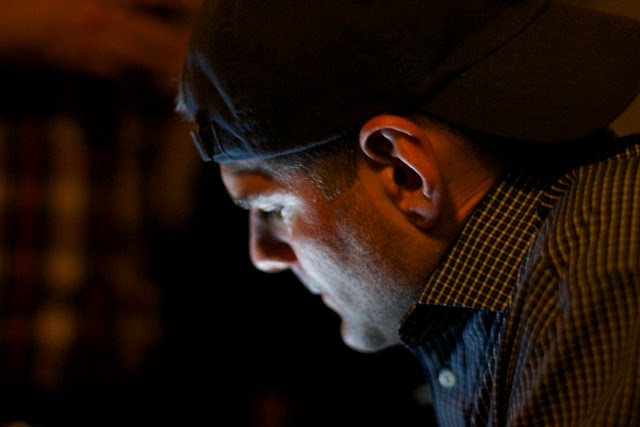20130419
20130312
20130311
On Word & Image in Vivre sa vie
As has been discussed, one of
Godard’s central concerns is the relationship between the image and the word.
How can an image engender thought in a manner that is usually reserved for the
structures of language? In what way can the image exceed the potentiality
of the word and communicate something entirely new? This question is
posed multiple times within his film Vivre sa vie.
First, in the scene where Nana discusses the value of the spoken word
with the philosopher Brice Parian, it is clear that Godard is shifting away
from the existentialist issues that dominate the dialogue of the film to
ruminate on the issue. Here Godard, via Nana (of course an anagram for Anna), questions the ability of
words to represent actual thought and wonders if words actually betray the
user. Why is it that words must be used to understand one another?
Why must one always talk? Is it possible to live in silence yet still
communicate? Finally, can one distinguish thought from the words that
express it?
These questions foreground the longstanding premise that thought is best
articulated via language into a film that largely relies on the image to convey
thought. Although Nana never explicitly asks about the image, Godard is
posing this very question throughout the entire film through extensive use of
close-up photography. The close-up, as in Dreyer’s The Passion of Joan
of Arc, becomes a communicative means to show thought through the
expressiveness of the face as recorded by the image.
Further, in looking at the relation between Poe’s The Oval Portrait
and the entire project of Vivre sa vie, Godard seems to be asking
whether there is danger in giving over too much power to the image. Poe’s
story tells of an artist that is so obsessed with creating a perfect image of
the real that he destroys the real for the sake of the image. Vivre sa
vie can be read as a retelling of The Oval Portrait in the way that
Godard wants to identify himself with the artist of Poe’s story by
demonstrating through a seemingly endless amount of beautiful close-ups of Nana’s
face his obsession with creating a perfect image of his then wife.
I think it is of little purpose
to interpret this film as merely a simple love letter to Anna Karina. By
asking these questions on the nature of the image to the word, artist to the
image and art to life, Godard still finds a way to ask the imperative questions
that matter to his larger project.
CGT
Note: This post originally was generated for the Godard Montage Blog. It can be seen here.
Astruc + Godard = Breathless
It was quite refreshing recently to read Truffaut’s treatment for Breathless and then to watch the film
within the larger context of Astruc’s essay La caméra-stylo. What
became immediately apparent in comparing the treatment to the film is that
everything that is interesting, fresh and original in the film originates
from the camera itself. Almost as if channeling Astruc’s ideas, Godard
takes a fairly bland treatment and, with his camera, writes
something wholly otherwise and cleverly rejects the common practice of effacing the
unique qualities inherent to film in order to function merely as a visual means
for representing literature. Breathless still cannot not be approximated
by another medium and, because of this uniqueness, demonstrates all the ways that film
differs from every other form of art. By writing with the camera, Godard
destroys the insistence on the invisible (editing) and brings the facticity of
the form to the foreground. How do you write a treatment for a film when
the main character is the camera-stylo itself?
20130113
Film - The Act of Speaking
Subscribe to:
Posts (Atom)

































